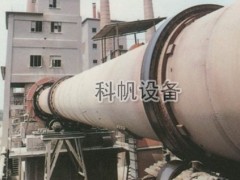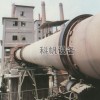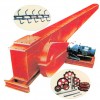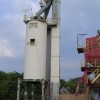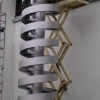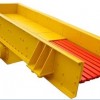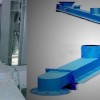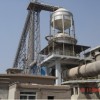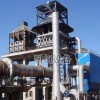The Introduction of Lime Rotary Kiln:
Rotary kiln refers to rotary calciner, belongs to the building materials device class. Rotary kiln according to different materials handled can be divided into cement kiln, metallurgy chemical kiln and lime rotary kiln.
Cement kiln is mainly used for calcinating cement clinker, including dry process production cement kiln and wet process production cement kiln. Metallurgy chemical kiln is mainly used for metallurgy industry steel lean iron ore magnetized roasting, chromium and nickel ore oxidizing roasting, refractory plant roasting high aluminium vanadium and soil ore and aluminum plant roasting clinker, aluminum hydroxide, chemical chromium ore and chromium ore powder roasting and so on. Lime rotary kiln (is active lime rotary kiln) is used for roasting activity lime in steel factory and ferroalloy factory and light burning dolomite
The Working principle of Lime Rotary Kiln:
Lime Rotary Kiln mainly consists of kiln body, sealing device for kiln tail, main and auxiliary driving device, burning device, discharging device, speed regulation , instrument control, PLC programming, interlocking device and dust-extraction device, etc.
CaCO3 is the main ingredient of the limestone, and CaO is the main ingredient of lime. The basic principle of lime burning is to preheat materials with low temperature, quickly burn them with high temperature, utilize the perheater and the kiln to heat the limestone and compose them into CaO and CO2., The chemical equation as below:
CaCO3—△—CaO+CO2↑ -Q
Technological process: At first , preheat the limestone to above 800℃, they will start to compose, And then, they will be pushed into kiln for further burning by the push rod actuator, until the temperature reaches about 1200 ℃. Finally, after cooled by cooler, they will be discharged out.
Features and Benefits of Lime Rotary Kiln:
1.Sturdy structure, smooth running, large capacity and good quality;
2. Widely range of adaptability to raw and fuel materials;
3. PLC auto-control system, centralized control in productive process.4. come up to the discharging standard with low NO emissions;
5.Energy conservation, waste gas as the second useful source, recycling economy;

